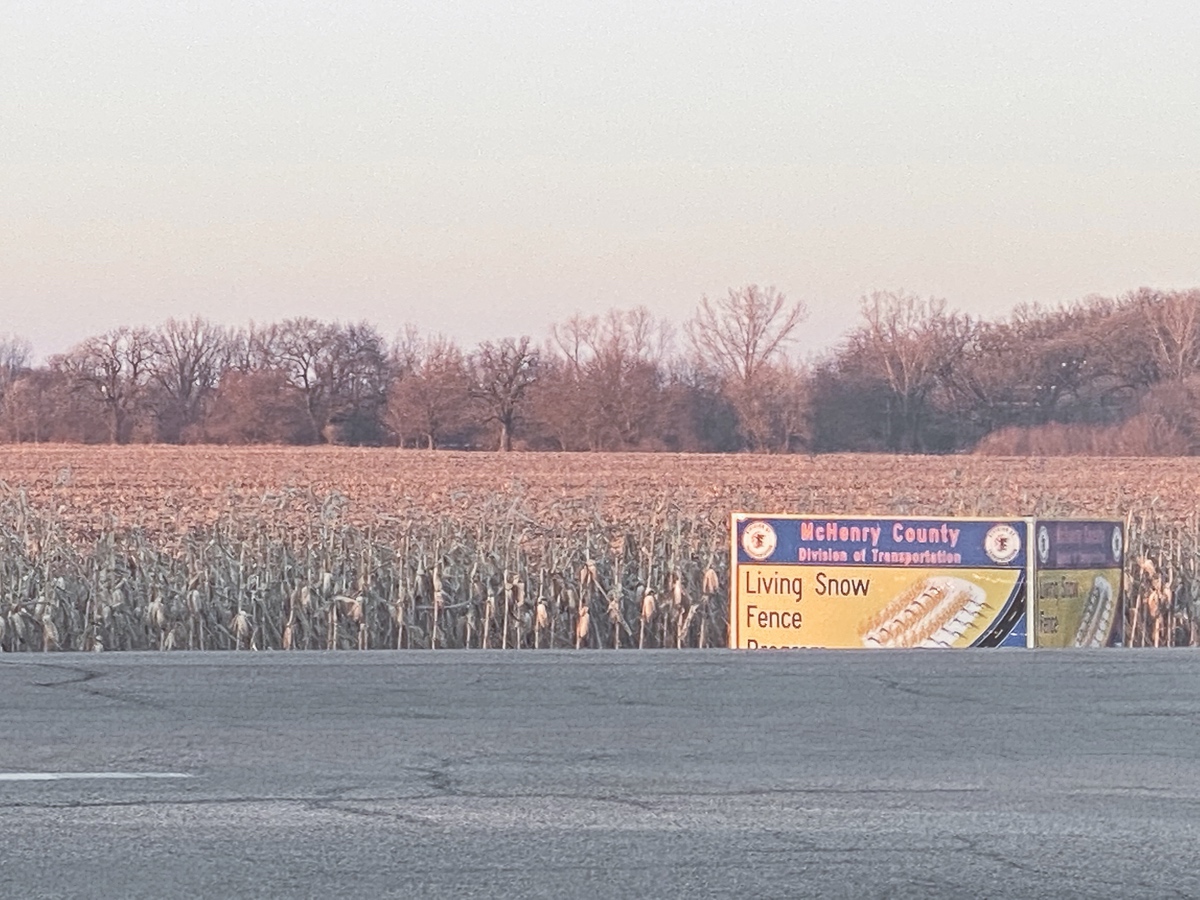It is no secret that winters in Illinois are brutal. Besides freezing temperatures and unpredictable snowfall posing hazardous conditions for drivers, residents of rural populated areas, including portions of McHenry County, face the added danger of snow drift.
According to the U.S. Department of Transportation, “blowing snow is the primary cause of icy roads in wind-exposed areas.” Not only do these icy roads endanger motorists, but they are costly to state and local agencies who spend billions of taxpayer dollars on snow and ice control operations.
In 2018, the McHenry County Division of Transportation (MCDOT) initiated the living snow fence program with collaboration from the McHenry County Farm Bureau, the McHenry-Lake County Soil and Water Conservation District and other local officials in an effort to fight back against snow drift.
These “living” snow fences are made up of standing rows of corn planted by local farmers parallel to a county road providing a natural barrier that traps snow before it blows onto the roadways.

Rows of unharvested corn stand on the west side of Main St., preventing snow from drifting onto the road. (Photo by Chris LaPelusa/Sun Day)
The McHenry County Division of Transportation Maintenance Superintendent, Ed Markison, highlighted the significance the program has had to the public since its first fence was introduced on Kishwaukee Valley Road in Woodstock.
“Our first priority is the safety of the traveling public. These living snow fences aren’t a new concept so I worked with people who were familiar with them out in Iowa to figure out the most effective way to introduce them here. Not only are they less expensive to put up than the plastic ones, but they are environmentally conscientious. McHenry County relies on aquifers for its water source unlike other places that get their water from Lake Michigan. By stopping the snow build up on the roads, we can prevent our water supply from being contaminated by excess chloride chemicals found in road salt,” Markison explained.
Unfavorable weather conditions only allowed for three farmers to participate in the program this year. One living snow fence is located near Main Street in Huntley.
While participation from farmers may vary from year to year due to timing and the rotation of crops, David Ziller, President of the McHenry County Farm Bureau, is hopeful in the future of this program and is ensuring better timing methods are introduced to farmers to get them prepared sooner.
“I hope they spread throughout the state. It’s a benefit to everyone. If we can prevent the local county highway department from doing all the snow removal work, then we can allocate those resources to other areas where they are needed more. What we learned is now we try to get a map together of county roads out to the farmers to get them better prepared to get their crops ready. It’s great that we as farmers can help keep the roads clean,” he said.
Farmers do get a monetary incentive in exchange for their participation in the living snow fence program. This program showcases a successful partnership between private and public entities in an effort to provide a cost effective and environmentally friendly way of sustaining McHenry County roadways.
This is a message that inspires Markison to continue working towards improvements within the program.
“We’ll continue to push for the safety of the public,” he said.




